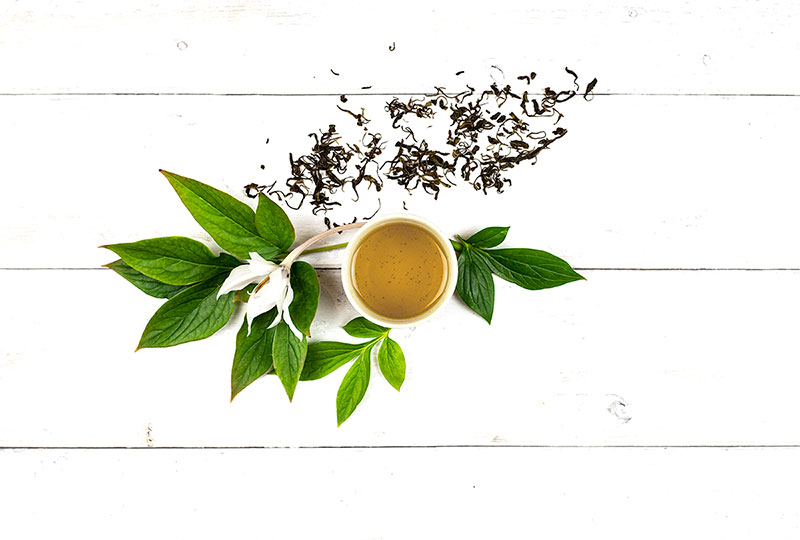Vietnamese Tea Guide
Vietnam is one of the top tea producing countries, yet still, as a tea drinker maybe you never really had a chance to try Vietnamese tea. Or, have you?
Where is tea grown in Vietnam?
Vietnamese tea may not be as famous outside the tea connoisseur circles, but it’s extremely important in the world of tea. Although Camellia sinensis is not a new plant in Vietnam, tea industry is. Today, it’s one of the biggest tea producers in the world, even though the whole production area is quite small compared to some other countries.
Tea is produced in more than half of Vietnamese provinces, 34[1] out of 58. Almost ¾ of the tea comes from the Northern Midlands and Mountains area, while the rest comes from the North Central area and Highlands[2]. Vietnam produces not only plantation tea, but many exquisite wild grown teas too. In fact, it’s probably one of rare countries that pays incredible attention to wildly grown tea. Some of the popular wild tea areas is Yen Bai region.
Best Vietnamese real tea
Vietnam produces almost all types of real tea – white, green, oolong, black and dark. Most of the tea produced is mass-market tea, exported and mostly blended with other teas. More than often it ends up in tea bags, and often not even labeled as Vietnamese tea. But recently, artisan specialty tea is becoming more popular than ever. And it can offer some truly remarkable, unique flavors.
Vietnamese teas have a very specific and unique flavor, that can be described as a mix of Taiwanese oolongs, Chinese and Indian black teas and Indian and Ceylon greens – with very intense flavors, boldness, warmth and colorful notes, perfectly matching their terroir. Vietnamese tea is made using different tea varieties and cultivars, with many of them being imported from Taiwan and Mainland China.
Tea is a very popular drink in Vietnam and preferred over coffee[3]. Green tea is the most popular type of tea in Vietnam. The most well-known green tea is Fish Hook, green tea from Thai Nguyen province. It has a unique, smooth, bold, sweet and vegetal flavor and a seaweed note.
Milk teas are popular too, especially boba milk tea, Thai milk tea and Hong Kong style milk tea.
Best Scented Vietnamese teas
Another type of tea popular in Vietnam is scented tea. Scenting is very popular for adding flavor and scent to real teas throughout Asia. Any tea can be scented, but green and oolong tea are the most common types. The most popular flowers for scenting? Jasmine and lotus – the national flower of Vietnam. Scenting is one of the most simple and oldest forms of adding flavor to tea.
However, even though it sounds simple, to scent the tea correctly, tea producers need to posses a lot of skill and knowledge to make scented tea. And a lot of flowers, too. To make only a kilo of the best lotus tea, up to 1000 flowers are needed. Just like jasmine tea, tea leaves are mixed with flowers multiple times, until the right flavor is achieved. Lotis tea brews into a very unique refreshing drink.
Best Vietnamese herbal tea
There are many popular herbal teas in Vietnam. Some of them are artichoke tea, made either from flowers or stems of artichoke, chamomile, jasmine and lotus flower tea and ginger tea. Herbal tea can be drunk hot and cold and sweetened.
Vietnamese tea benefits
Both real teas and herbal teas may provide many health benefits. While each and every herbal tea is different, real teas mostly posses the same benefits, which may be more or less expressed depending on the type. They are:
- Antioxidant activity
All real teas are rich in antioxidants. Antioxidants are responsible for reducing oxidative stress and fighting free radicals, thus preventing cell damage and a development of many diseases. Green tea is rich in EGCg, while black tea contains thearubins and theaflavins.
- Anti inflammatory activity
Both black and green tea may provide an anti inflammatory activity. Inflammation may lead to many health problems. Studies showed that drinking tea may help people with type 2 diabetes[4], coronary heart disease, arthritis and others[5].
- Boosting energy
All real teas contain caffeine, so Vietnamese white, green, oolong, black and dark tea contains caffeine too. Caffeine in tea may provide energy without the jitters.
- Aiding weight loss
Studies showed that green, black, white, oolong and pu’erh tea may help with weight loss goals. They may help increase fat burn, prevent new fat cells from forming[6],
Furthermore, wild tea is mostly organic, as it is grown without human interference. Some of those teas may be very high and old, growing for decades in nature.
How to make Vietnamese tea
To make the best cup of Vietnamese tea, always use fresh spring water. Brew the tea using multiple-steeping technique to enjoy hidden flavor notes, especially in wild teas. However, you can use a regular western brewing method and use one teaspoon of tea leaves per cup of water and steep for 1-3 minutes.
Bring water to a boil. Preheat the teapot and cups by pouring boiling water in and out. Add tea leaves into a teapot. Use about 3-7 grams of tea leaves per 150 ml of water if you want to re-steep them many times and enjoy intense flavor and scent. Otherwise, use one teaspoon per cup of water. Let the water cool down to an appropriate temperature and steep.
Disclaimer: This article is for informational purposes only. It’s not intended to replace medical advice, diagnosis or treatment. Every person is different and may react to different herbs and teas differently. Never use teas or herbs to treat serious medical conditions on your own. Always seek professional medical advice before choosing home remedies.
References:
[1] https://pdfs.semanticscholar.org/6fa7/3719a4bc8a152ceca1baf577009ed3a2b348.pdf
[2] http://www.vietnam-tea.com/618/vietnam-tea-overview.html
[3] https://tuoitrenews.vn/news/lifestyle/20181026/teabased-drinks-outplay-coffee-in-caffeineloving-vietnam-report/47394.html
[4] https://www.researchgate.net/publication/308202926_Anti-inflammatory_Action_of_Green_Tea





